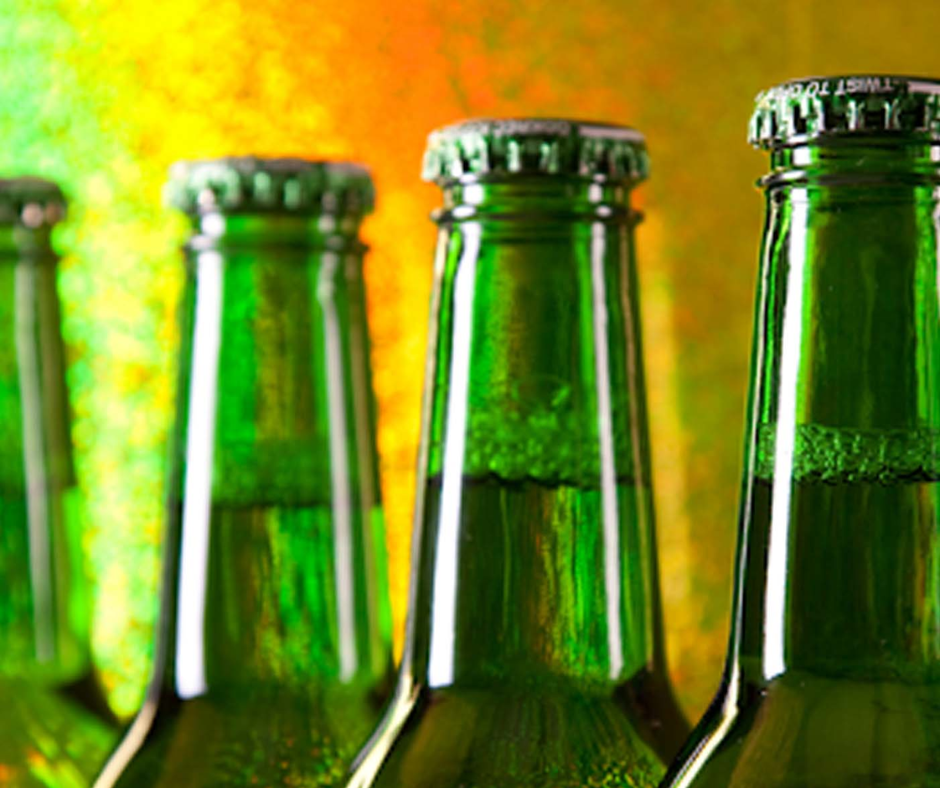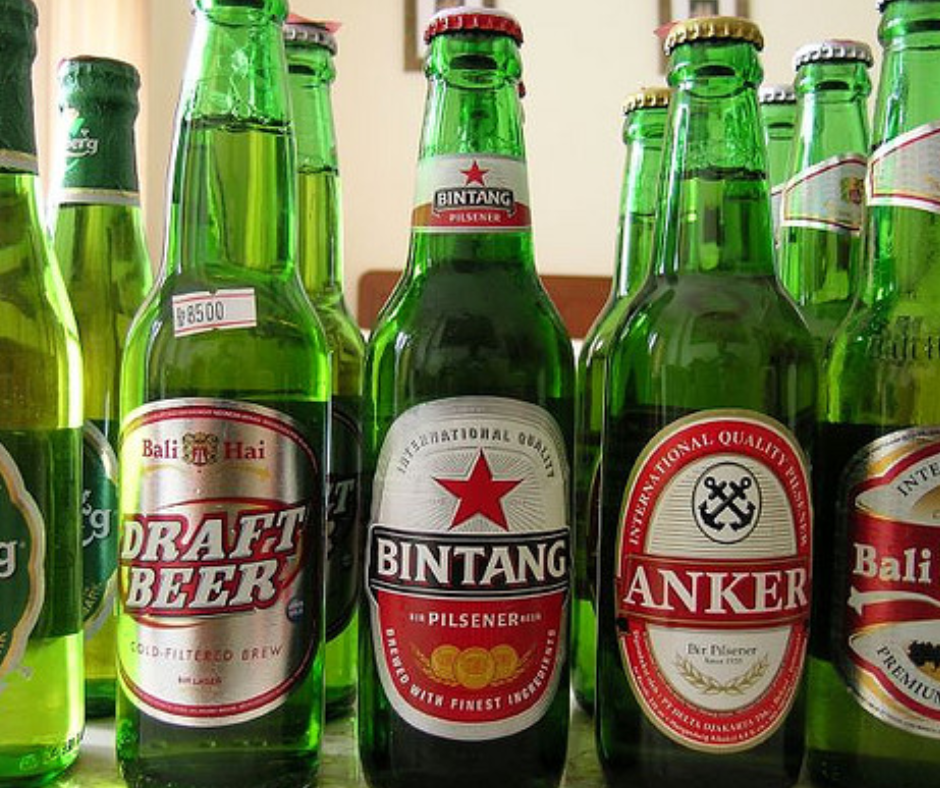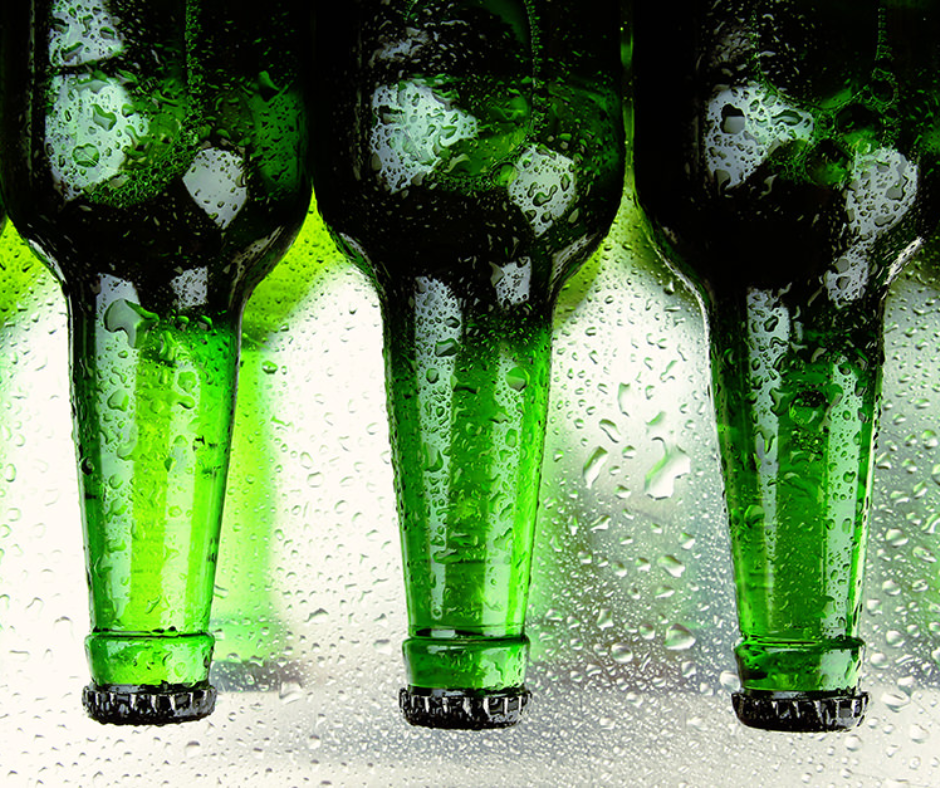Introduction
When it comes to beer and bottles, there is an age-old myth that green bottles are the worst choice for preserving beer’s flavor. But is there any truth to this belief? In this article, we will debunk the Beers in Green Bottles myth and explore why it is important to separate fact from fiction in beer packaging.
The Myth Of Green Bottles And Beer
The myth that green bottles are bad for beer originated from the fact that they allow more light to penetrate the bottle compared to brown or amber bottles. This exposure to light can cause a reaction with the hops in beer, resulting in a phenomenon known as “lightstruck” or “skunked” beer. The skunky aroma and flavor are caused by a compound called 3-methyl-2-butene-1-thiol (MBT), created when the hops are exposed to ultraviolet light.
However, it is important to note that not all beers are equally susceptible to becoming skunked. Beers with higher hop content are likelier to develop this off-flavor, while low-hopped beers or those with different hop varieties may not be affected. Additionally, modern brewing practices and advancements in packaging technology have minimized the risk of lightstruck beer, making it less of a concern today.
Why Debunking This Myth Is Important?
Debunking the myth of green bottles being bad for beer is important for a few reasons. First and foremost, it allows for a more informed consumer choice. Many beer enthusiasts have been led to believe that green bottles should be avoided at all costs, missing out on potentially great beers that happen to be packaged in green bottles. By dispelling this myth, beer drinkers can explore a wider range of options without being limited by the color of the bottle.
Secondly, it encourages breweries to experiment with different packaging options. If the stigma surrounding green bottles is removed, breweries may feel more inclined to use them as a unique identifier for their brand or as a way to showcase a particular beer style. This could lead to more diversity and creativity in the beer market, offering consumers greater choices.
In conclusion, the belief that green bottles are inherently bad for beer is a myth that needs debunking. While it is true that they allow more light to reach the beer, resulting in a higher risk of lightstruck flavors, this issue can be mitigated through modern brewing techniques and packaging innovations. By understanding the nuances of beer packaging, consumers can make more informed choices, and breweries can explore new possibilities for branding and beer styles.

The Science Behind Beers in Green Bottles
Regarding beer packaging, the color of the bottle has sparked an ongoing debate among beer enthusiasts. One common myth is that green bottles are responsible for skunky beer. But is there any truth to this claim? Let’s dive into the science behind beer and bottles to debunk this myth and understand bottle color’s role in preserving beer’s quality.
Exploring The Role Of UV Light In Beer Degradation
UV light is known to be the primary culprit behind beer’s “skunky” flavor. When UV light reacts with the hop compounds in beer, it creates a chemical reaction that produces a sulfur compound, similar to the scent of a skunk. This process is called light-struck or light-sensitive.
Green bottles, unlike brown or amber bottles, provide less UV protection. This means more UV light can penetrate the bottle and interact with the beer, leading to a higher chance of skunking. However, it’s important to note that UV light from other sources, like fluorescent lights or sunlight, can also cause beer degradation, irrespective of the bottle color.
Understanding The Impact Of Different Colored Bottles
While green bottles may be more susceptible to skunking, they are not solely responsible. Brown or amber bottles offer better protection against UV light, which helps to preserve the beer’s flavor and aroma. This is why you’ll often find quality craft beers and imports packaged in brown or amber bottles.
On the other hand, clear glass bottles offer little to no protection against UV light and are highly prone to skunking. If you’ve ever tasted a skunky beer, chances are it was packaged in a clear bottle.
Many breweries also use special UV-blocking coatings on bottle colors to safeguard their beer from UV light further. This additional protection helps to minimize the skunking effect and maintain the beer’s freshness.
In conclusion, the myth that green bottles are solely responsible for skunky beer is inaccurate. While green bottles provide less UV protection, the exposure to UV light causes beer degradation. Brown or amber bottles offer better UV protection, making them a more popular choice among breweries to preserve the quality of their beer. Remember, when it comes to enjoying a cold brew, the bottle color may have more to do with preservation than taste.
Green Beer Bottles: Debunking The Myths
Myth #1: Cold Beer Getting Warm Makes It Stale
One common belief is that it will become stale if Beers in Green Bottles gets warm. However, this is not entirely true. While temperature fluctuations can affect beer’s flavor, the color of the bottle is not the main culprit. Exposure to light, especially UV light, can cause a beer to become ‘skunked.’
Myth #2: Green Beer Bottles Don’t Block Skunk-inducing UV Light
Contrary to popular belief, green bottles can provide UV light protection. While it is true that green glass does allow more light to pass through compared to brown or amber glass, it still offers some degree of shielding. The color of the glass can absorb a significant amount of UV radiation, preventing it from reaching the beer and causing the skunky aroma associated with light-struck beer.
It is important to note that no glass color can completely block out all UV light. That’s why it is still recommended to store beer in a cool and dark place, away from direct sunlight, regardless of the color of the bottle. Beer is best enjoyed when protected from light and kept at a consistent temperature.
While green beer bottles may allow more light to pass through compared to other colors, they still provide some level of UV light protection. The notion that cold beer getting warm results in staleness is a bit of a misconception. Exposure to UV light is the primary concern regarding beer storage. So, whether your beer comes in a green or brown bottle, the key is to keep it away from light and store it properly to ensure the best possible quality.

Conducting Beer-bottle Experiments
Materials Needed For The Experiment
For this experiment, you will need the following materials:
- Beer bottles of different colors (green, brown, and clear)
- UV light source
- Light meter
- Beer of your choice (same brand and variety for each bottle color)
- Stopwatch or timer
- Notepad and pen to record observations
Testing The UV Light Penetration In Different Colored Bottles
Many beer enthusiasts believe Beers in Green Bottles are more prone to skunking or developing a stale and unpleasant flavor. This myth has led to the popular preference for brown bottles over green ones. But is there any truth to this claim?
To find out, you can conduct a simple experiment using different colored beer bottles and a UV light source.
- Start by setting up your experiment area in a dimly lit room, away from sunlight or fluorescent lighting.
- Place the colored beer bottles (green, brown, and clear) in a row.
- Turn on the UV light source and position it about 1-2 inches away from each bottle, one at a time.
- Use the light meter to measure the amount of UV light penetrating each bottle.
- Record your observations, noting the UV light intensity for each bottle color.
- Repeat the process for each bottle color and calculate the average UV light penetration for green, brown, and clear bottles.
The results of this experiment may surprise you. Contrary to popular belief, green bottles provide better UV protection than clear bottles. Brown bottles, however, offer the greatest level of protection against UV light.
It’s important to remember that UV light contributes to beer skunking. Other factors include exposure to heat and prolonged storage. So, while green bottles may offer some UV protection, storing your beer in a cool, dark place is still crucial to preserve its flavor and quality.
By conducting this simple experiment, you can debunk the myth surrounding green beer bottles and better understand beer preservation. Cheers to science and good beer!

The Truth About Green Bottles And Beer
Beer lovers worldwide have long debated the effectiveness of green bottles in preserving the quality of their beloved beverage. Many argue that green bottles allow light to penetrate, leading to a “skunky” taste. But is there any truth to this claim? Let’s dive into the facts and debunk the myth of green bottles.
Understanding The Fluctuations In Temperature During Shipping
One of the main concerns with green bottles is their inability to protect beer from light exposure. While it is true that green bottles do allow some light to enter, the amount of light exposure during shipping is often negligible. Beer is typically shipped in temperature-controlled containers or stored in dark warehouses, minimizing the impact of light on the final product.
Furthermore, the fluctuations in temperature during shipping can play a significant role in developing off-flavors, regardless of the bottle color. Temperature variations can cause oxidation and skunking in beer, compromising taste. Therefore, it is crucial to consider temperature control throughout the entire beer distribution process rather than solely focusing on bottle color.
Determining The Effectiveness Of Green Bottles In Preserving Beer
Despite the common belief that green bottles lead to skunky beer, it is important to note that the presence of light is not the sole factor responsible for this off-flavor. Compounds known as isohumulones in hops react with light to create a chemical reaction that produces a skunky aroma and taste. This reaction can occur in any bottle color, including brown and clear.
To combat this issue, breweries have taken various measures to minimize the risk of skunking. Some breweries use hop extracts or different hop varieties with lower isohumulone concentrations. In contrast, others employ light-resistant packaging techniques, such as tinted labels or specialized coatings, in addition to using green bottles.
In conclusion, the myth that green bottles are solely responsible for skunky beer is just that – a myth. While green bottles allow light to penetrate, the interaction between light and certain compounds in hops leads to off-flavors. Brewers have taken steps to mitigate this issue, and it is crucial to focus on temperature control during shipping and storage to preserve beer quality, regardless of bottle color.
FAQ about Beers in Green Bottles – Beer and Bottles: Debunking the Myth of Green Bottles
Q: Is it true that green beer bottles don’t block skunk-inducing ultraviolet light?
A: Contrary to popular belief, green beer bottles do not offer adequate protection against skunk-inducing ultraviolet light. Lab experiments conducted by Wired Science blogger Rhett Allain have demonstrated that green bottles allow harmful UV rays to reach the beer, potentially altering its taste.
Q: Why should I avoid beer in green bottles?
A: While it’s a personal choice, and you can still drink beer from green bottles, some people prefer to avoid them due to the potential for the beer to have an extra taste that may not be enjoyable. Green bottles are more prone to letting in harmful UV rays, which can negatively impact the flavor of the beer.
Q: Is it better to drink beer from cans or bottles?
A: There is a lot of confusion surrounding this topic. Some beer lovers believe that drinking from cans preserves the taste better, as cans are more effective in blocking out light and preventing skunking. However, others argue that drinking beer from glasses allows for a better appreciation of the aroma and flavor.
Q: Why should I pour my beer into a glass?
A: Pouring your beer into a glass can enhance your drinking experience by allowing you to appreciate the beer’s aromas and flavors fully. Additionally, pouring it into a glass helps to avoid any metallic taste that may come from cans or the part of the bottle where the cap attaches.
Q: Is beer bad for you?
A: Like any alcoholic beverage, consuming beer in moderation is generally safe. However, excessive consumption of any alcoholic drink can have negative health effects. It’s important to drink responsibly and in moderation.
Q: Are bubbles on the side of the glass a sign that it’s dirty?
A: Yes, if you see bubbles clinging to the side of your glass, it may indicate that the glass is dirty. Bubbles tend to adhere to areas where there is dirt. Consider cleaning your glasses thoroughly or using a new dishwasher to prevent this.
Q: Are brown glass bottles better than green bottles?
A: When it comes to blocking UV rays and preventing skunking, brown glass bottles are generally more effective than green bottles. Brown glass provides better protection against UV light, reducing the chances of the beer being negatively affected.
Conclusion
In conclusion, the myth surrounding Beers in Green Bottles and their supposed superiority is just that – a myth. While it is true that green bottles allow more light to penetrate the beer, leading to the potential for skunking, this can be prevented through proper handling and storage. It is also important to note that not all green bottles are created equal, and some breweries have taken steps to mitigate the skunking effect by employing special coatings or using darker green glass.
Dispelling The Myths Surrounding Green Beer Bottles
The belief that Beers in Green Bottles are superior or of higher quality than beer in other colored bottles is a common misconception. The origin of this myth can be traced back to the early days of beer production when green bottles were associated with prestigious European breweries. However, the reality is that the color of the bottle has little to do with the quality or taste of the beer.
The main issue with green bottles is their susceptibility to UV light, which can cause a chemical reaction with the hops in the beer, resulting in a skunky aroma and flavor. However, this can be easily avoided by keeping the beer away from direct sunlight and storing it in a cool, dark place. Proper handling and storage are key to preventing beer from becoming skunked, regardless of the bottle color.
Implications For Beer Storage And Consumption
When it comes to storing and consuming beer, the most important factors are temperature control and protection from light rather than the color of the bottle. Consider storing your beer in a cool, dark place, such as a refrigerator or a cellar, to preserve its flavor and prevent any potential skunking.
It is also worth noting that the myth surrounding green beer bottles has led some breweries to switch to other bottle colors, such as brown or amber, which offer better protection against light. These bottles have a higher level of UV resistance, reducing the risk of skunking and ensuring a better drinking experience.
In conclusion, while green beer bottles may have a romantic allure, they do not inherently make the beer inside them any better. Proper storage and handling, along with choosing bottles with adequate UV protection, are far more important factors for preserving the quality and taste of beer. So, the next time you reach for a beer, don’t let the color of the bottle fool you – it’s what’s inside that truly matters.

Andre Lotz immigrated to the United States from South Africa almost 20 years ago. Still, he didn’t feel truly at home until he settled in Mobile—a city that reminds him of his childhood home of Fish Hoek on the southern cape of Africa.

